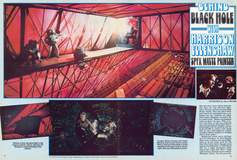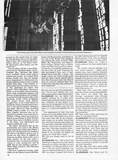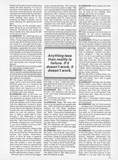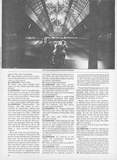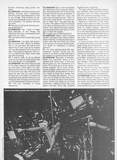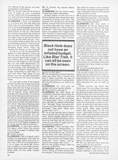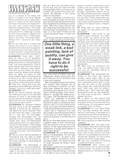Man has never seen a black hole, but that does not stop Harrison Ellenshow, 33, from creating one at the Walt Disney Studio. Since the film's black hole cannot be assembled from a collapsed star (as scientists say black holes begin), Ellenshaw created it. He is a matte artist. "Mattes are paintings made on glass," he says. "Film of actors and parts of sets are projected onto clear portions of the glass. We re-photograph both the painting and the projected film to create a new image that no one could duplicate without spending millions of dollars or building sets in outer space."
Making the unreal real is old business for Ellenshaw. In 1974 Nicholas Roeg came to Disney and asked Ellenshaw to do the matte work for The Man Who Fell to Earth. George Lucas approached Ellenshaw in 1976 with an idea for a highly speculative, littleknown film called Star Wars. "Originally George planned seven mattes," Ellenshaw relates, "but he was so impressed by the results that we made 13. George knew how to use my skills. That is why I like working with Gary Nelson (director of The Black Hole). He appreciates what mattes can and cannot do."
Current plans call for a new Hollywood record: 150 matte shots. To accomplish this, Harrison has hired every available matte artist and is training new people. As a result, Walt Disney Studio now has the largest matte department in Hollywood, employing half the artists in town working double shifts daily. "I had initially resisted going into the industry because of the reputation my father had gained." Peter Ellenshaw, Harrison's father, is an Academy Award-winning matte artist, production designer and director of special effects who originally worked in England with producer Sir Alexander Korda (Thief of Bagdad, The Jungle Book). Walt Disney brought Peter to the United States to handle the design, planning and execution of the special optical, miniature and matte effects for films including 20,000 Leagues Under the Sea and Mary Poppins. Harrison was not interested in a similar career and went to Whittier College where he received a degree in psychology in 1965. He then served three years of military service in the Navy, was discharged and started looking for a job.
[…]
